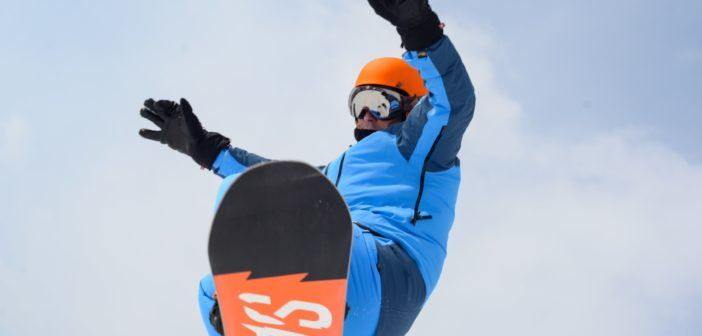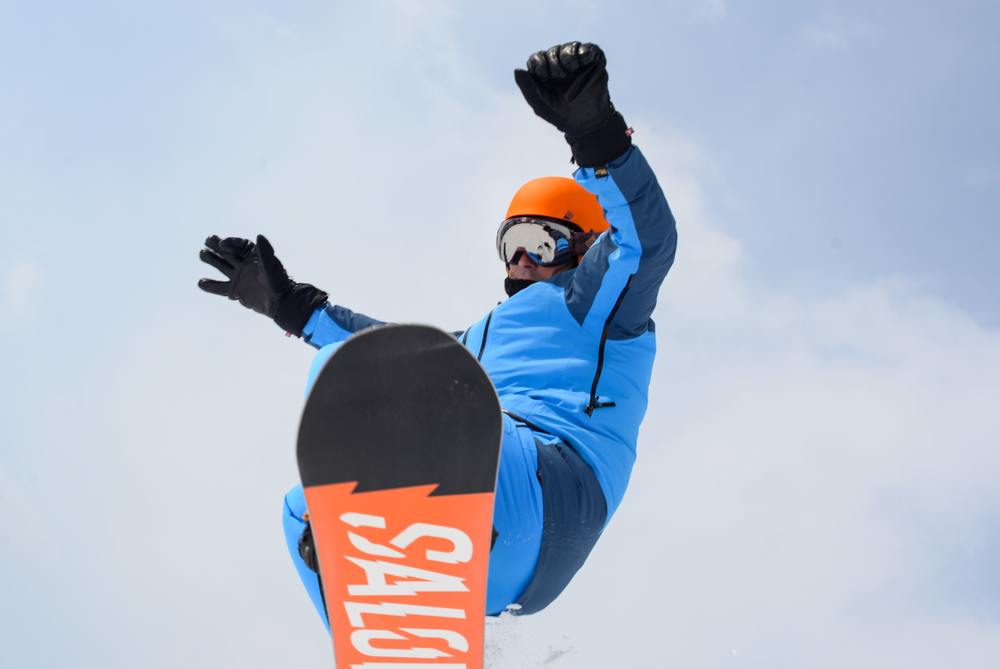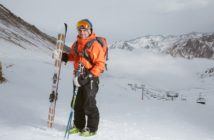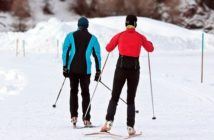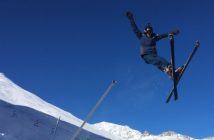If you’re new to snowboarding, it’s easy to wonder: Just how many different types of snowboards are out there?
Snowboards vary not only in make, but also in shape, flex, environmental preference, camber, and more.
Don’t let all those variables intimidate you. Wading through the types of snowboards to find your exact fit will be easier than expected. Here we’ll break down everything you need to know, so you can select the right type for you.
What are the most general models? What are the finer details to consider? Which board is ideal for what kind of fun on the slopes?
Let’s find out!
Contents
Different Types of Snowboards
Your perfect snowboard fit will be based on the kind of snowboarding you prefer.
A snowboard that’ll do well in a trick park, for example, will falter on a mountainside. Those that favor powder may struggle in hard-packed snow.
Don’t go into your local shop or chain store and pick up the first snowboard you see! First, consider the type of fun you enjoy on the slopes, and then check out how these designs can give you that cutting edge.
All-Mountain Snowboards
All-mountain snowboards are a great type of generalized snowboard. It doesn’t matter what terrain you’re riding on, how hard the snow beneath you has been packed, or what the weather conditions are.
All-mountain boards – as their name implies – are designed to handle all types of mountains. As such, they’re among the best for beginners.
These are also directional boards – a detail we’ll touch on later – but you can customize your board’s make to ensure it fits your style of riding more effectively.
So, are you just getting familiar with your terrain of choice? Then you’ll want an all-mountain board for your next winter sports adventure.
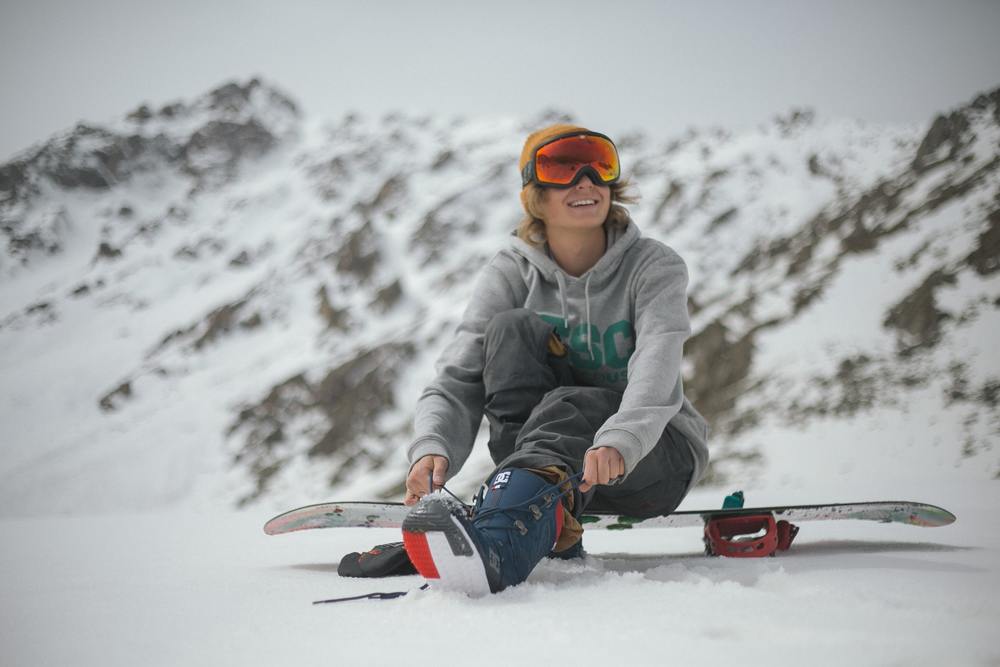
Freestyle or Park Snowboards
Are you feeling frisky? Then a park snowboard is an ideal model for you.
As the name suggests, freestyle snowboards are best in snowboarding parks, where you can attempt tricks without having to worry about your model bending in the wrong direction.
These boards are lighter than some of their sturdier cousins and far more flexible.
However, you don’t have to stick to the parks with this variety. You can take these boards out onto groomed slopes or a mountainside; just be prepared for a bouncy ride.
While park snowboards aren’t the fastest out there, you will still need to leverage some aggression to keep them stable outside the park.
Alpine Snowboards
Alpine snowboards aren’t ideal for trick snowboarders. However, if you want to carve down a hillside with exceptional skill, this narrower design will be excellent for you.
Alpine boards are stiff and meant to help you move quickly down a hillside. They’re also more stable than trick boards, so you’re less likely to go tumbling if you shift the wrong way.
Freeride Snowboards
For some, the greatest appeal of the sport is taking to the mountains and exploring the gifts Mother Nature has to offer.
If you want to trek through majestic mountainsides, or just leave the groomed slopes of a ski park behind, then a freeride snowboard is the ideal design for your needs.
Freeride snowboards are excellent for maneuvering down long, winding hills – especially those a little wilder than the kind found in a park.
They generally provide the best edge hold, and are built stiffer than average. As such, they’re great for rougher terrain, but not so easier for beginners to master. They typically like aggression.
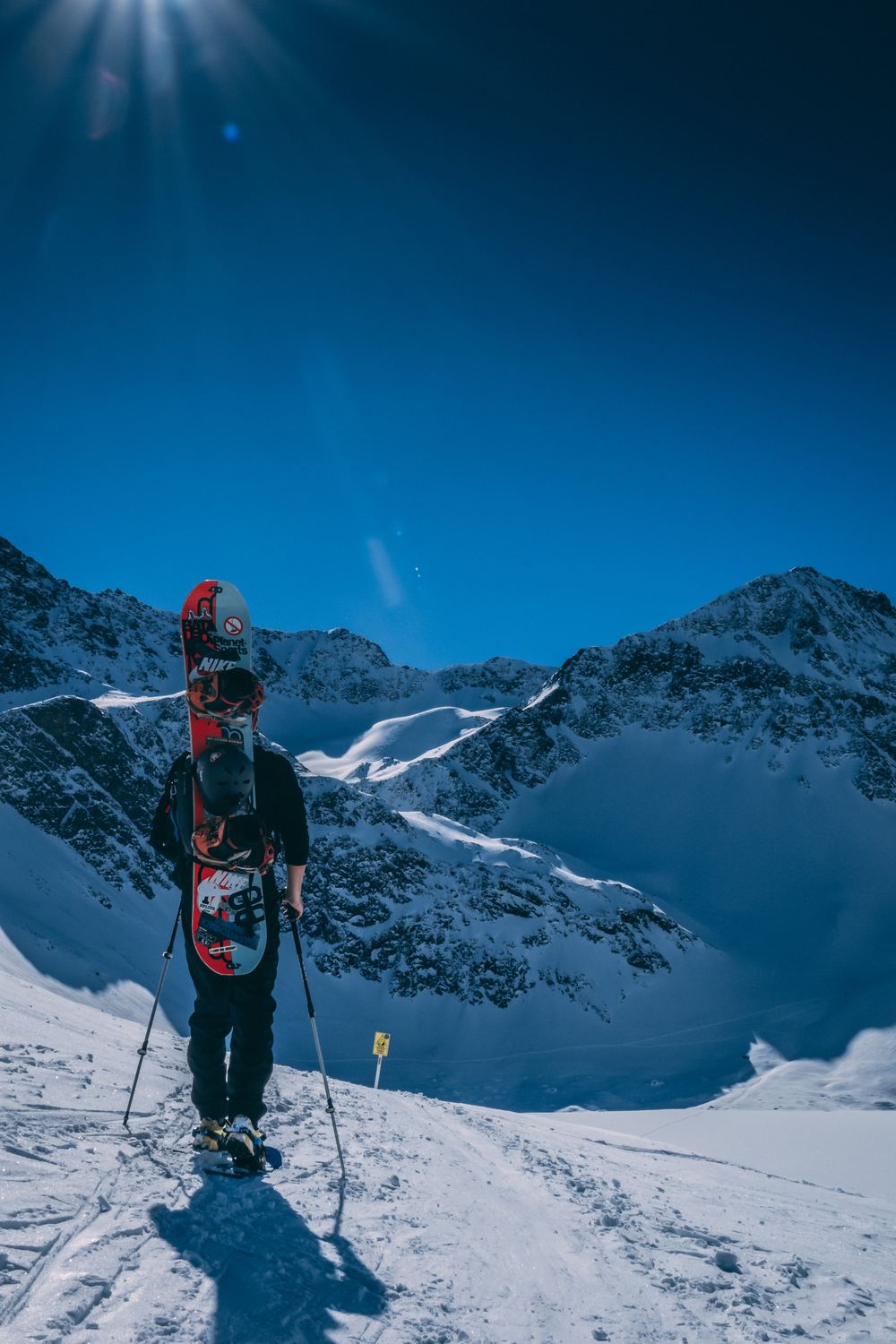
Powder Snowboards
If you’re not looking for a mountainside retreat, a day in the trick park, or a general cruise down a groomed slope, what are you after? One word: powder.
Deep powder describes freshly fallen snow that hasn’t yet been packed down by the environment or by other snowboards.
So, if you want to dive head-first into a pile of the fluffiest snow you can imagine, you’ll need a powder snowboard.
Powder snowboards are designed with deep snow in mind. As a result, these boards are less great on other types and may struggle heavily on hard-packed snow. Even still, when placed in their perfect element, you can sail over deep snow like a dream.
The bindings on powder snowboards, along with the board’s general shape, are meant to provide ‘float’, making it easier to move in and out of deep snowbanks.
This video goes into more details about the types of snowboards commonly available.
What to Consider When Choosing Between Types of Snowboards
When exploring the different types of snowboards available to you, you should consider more than just the board’s make.
Snowboard length, width, camber, rocker, and other features all play into a snowboard’s versatility. Beyond this, your own experience level can impact your ride.
So, once you’ve decided which type of snowboard is the best for your ambitions, be sure to consider the following:
Snowboard Length
Deciding on a snowboard’s ideal length isn’t complicated. When you position a snowboard up on its back end, the top should bop you roughly between your nose and chin.
This system of measurement is a great way to rule out boards that are absolutely outside your range. It certainly makes the shopping process faster. However, once you have a general benchmark, it’s time to get detailed.
Many newbies assume it’s your height that impacts the desired length of your snowboard. Nope! It’s your weight.
A snowboard will provide the smoothest ride when it’s able to spread your weight evenly across the snow’s surface. As such, the greater your weight, the longer your board has to be.
Your weight also affects your general size, so choosing a board that can accommodate your specific girth will help you maintain balance. Imagine a full grown man balancing on a kid’s board! Hilarious, but ineffective.
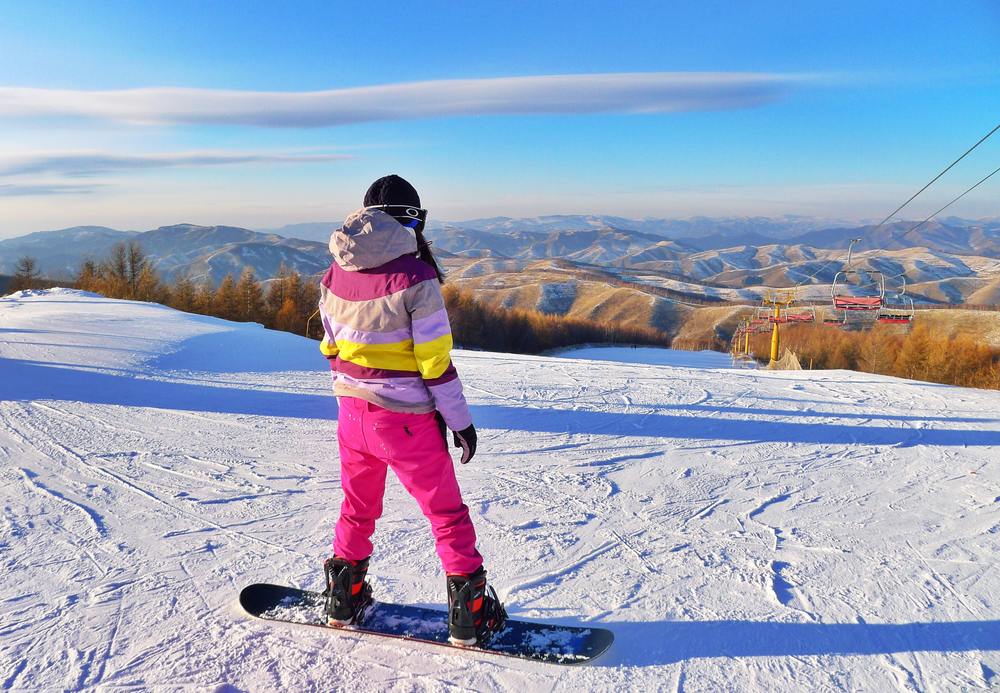
For example, a snowboarder weighing between 150-200 pounds will usually be alright on a snowboard that’s 158 centimeters in length.
Most shops provide you with weight-to-length charts, so be honest when you start shopping; it’ll result in a more enjoyable ride.
Camber and Rocker
Camber and rocker determine the stability of your trip down a snowy slope.
When deciding what degree of camber or rocker you need, pay attention to these details:
- Camber: High camber boards offer stable rides. Camber is essential in responsive boards. If you prefer to ride on hard-packed snow or groomed slopes, you need a board with a fair amount of camber in its build. Camber will also make your ride significantly faster – so speed demons rejoice, but newbies beware.
- Flat: Flat boards, comparatively, are boards with no camber at all or as little camber as possible. You can use a flat board to make quick turns and to easily increase your float.
- Rocker: These are also known as reverse camber. You can identify a rocker board by noticing its smiley-face tips and tails. Boards with a significant rocker are best for trick parks, as the upturned tips will give the board the extra power it needs to maneuver quickly through tight turns. These boards are softer than their cambered cousins. Their ease of use makes them ideal for new riders; however, if you have more experience under your belt, you can still unlock their potential at your nearby park.
- Camber/Rocker: Cambers and rockers are sometimes combined, merging the upturned tips of rocker boards with the bow of camber boards. This style of board can turn on a dime, but they’re made with individual people in mind. If you’re interested in a customized snowboard, speak to your manufacturer and decide the specific degree of rocker or camber that suits your riding style.
- Flat/Rocker: Flat/rocker boards have a long, flat section in their middle and the rocker’s smiley-face tips. These kinds are great in soft snow, as they can provide easy turns and excellent float. Similar to camber/rocker boards, you can speak with a snowboard manufacturer to find the balance and ride that best suits you.
Snowboard Width
Snowboards come in a number of different sizes. When choosing yours, look for one that allows the toes of your boots to extend ever so slightly over the board’s edge.
Too much overhang can result in uncomfortable drag while on the slopes, but just enough can provide an extra dose of control while turning.
Snowboard Shape
- Directional: These are meant to be ridden in a single direction. As such, there is a definitive front to the board and a definitive back. You shouldn’t be attempting any fancy shifts in direction – or else risk a pretty nasty fall. If you’re looking for speed, however, these boards are among the best for you. You’ll be able to use your directional board to carve far more effectively and to soar down a mountain at great speeds. Most all-mountain boards and a number of freeride boards are carved in the directional style.
- True Twin: These don’t have the directional’s distinct front and back. Instead, the two ends of these boards mirror each other, so you can ride on them backward or forward without issue. As a result, you’re far more likely to see these boards in parks or while riding pipes. Freestyle and park snowboards are most often designed with a true twin shape in mind.
- Directional Twin: These are generalized boards for riders of all types. You can ride on a directional twin board whether you’re on the side of a mountain, on a set of groomed slopes, or tearing your way through a trick park. Just make sure that you keep other board elements in mind if riding on a directional twin board. While they’re more generalized than the other two designs mentioned here, you still need to optimize your board for the best shredding experience.
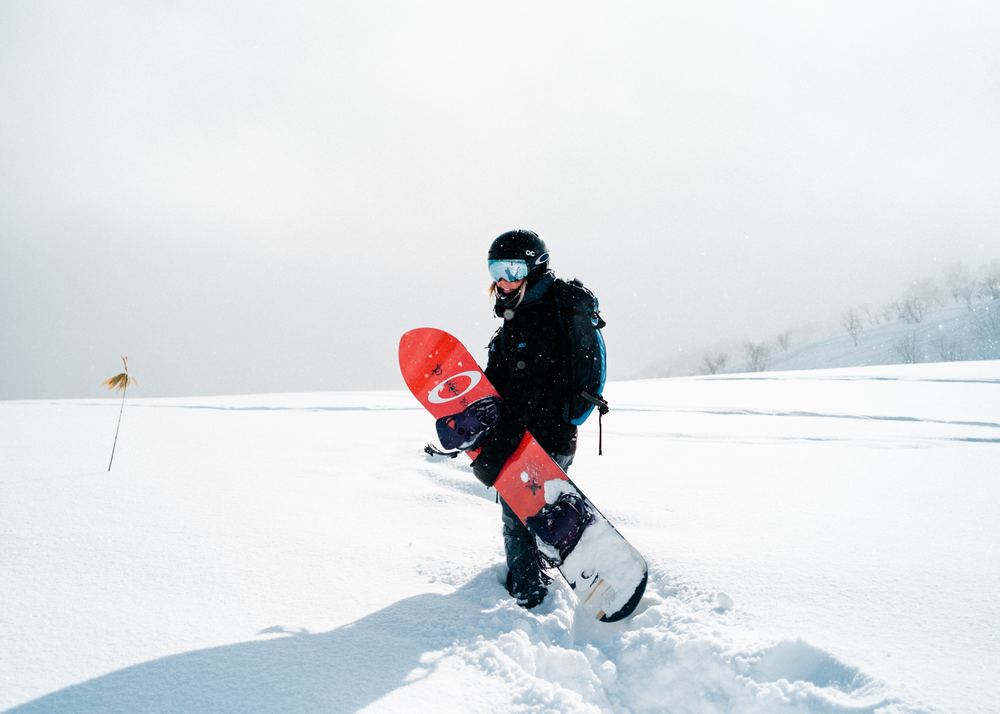
Snowboard Flex
You should also test the flex of your ideal board before purchasing it. Snowboards can flex along their length, called longitudinal flex, and their width called torsional flex.
- Soft Flex: These boards flex more than others and, as a result, are easier to use. If you’re looking to make turns without a great deal of resistance, this design will suit you best. Riders with low body weights or who are brand new to snowboarding will benefit from the docile and near-effortless maneuverability. Park riders, too, can take advantage of a soft flex board’s forgiving nature.
- Stiff Flex: These are a little more difficult to handle, but maintain their speed better than a soft flex board. If you’re looking to race or keep up a fast pace, this design is ideal. However, make sure that you only purchase a stiff flex board when you’ve developed solid experience. They don’t turn easily and will require skill to manage. Nothing’s worse than zooming along, only to realize you have no control!
Note that your snowboard should only flex in two directions. If its flexing in more than that, you’re probably in trouble.
Snowboard Edge
Last but not least, consider a snowboard’s edge and the way its radius is going to impact your ride.
Riders use the term “sidecut radius” to describe the cut of a snowboard’s edge. By listing this detail, manufacturers can specify whether the board you’re looking at can make tight turns or broader ones.
A sidecut also affects the accuracy of your turns, as this will determine your ‘edge hold’ – or the amount of ‘grip’ your board is able to get on the snow during a turn.
Since it’s the difference between tumbling or looking awesome, pay attention to this detail.
- Tapered Waist: Boards that have a tapered waist – that is to say, a middle that’s narrower than either end – will be able to make tighter turns.
- Non-Tapered: Comparatively, boards with a chunkier waist will be more equipped to make sweeping turns.
Here’s a video with more information on the different types of snowboards.
Conclusion
So, do you know which type of snowboard is right for you? When you’re starting out, don’t be afraid to experiment with different board types in order to gain your footing.
As you grow more experienced, you’ll become comfortable with the different varieties and understand which call for more practice and which suit your exact style.
Don’t wait until the first snow begins to fall to start shopping. Start experimenting, practicing, and searching for different kinds now. That way, you’ll be more than ready to hit the slopes when winter rolls around.
What’s your preferred types of snowboard?

